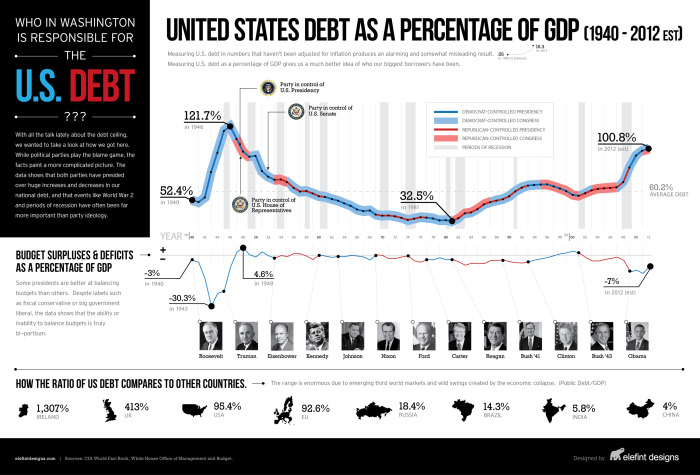 Fear makes people do crazy things.
Fear makes people do crazy things.
I hate elevators. Somewhere between a few brief moments of entrapment as a six year old, and the desire to choose my own destiny, I developed a growing fear that every elevator ride would result in a long, slow, suffocating demise.
Which made moving to New York City an odd decision since, with the exception of a slice of pepperoni, it’s hard to find a destination not encumbered by the elevator that lies between you and it.
As with all irrational fears, it’s easier to succumb to their power, one small concession at a time - even while we rationalize their absurdity - than it is to see past them to confront the influence they cast over us.
This is how fear works. Hanging around. Changing behavior. Looking for opportunities to dig a little deeper. Painting a picture of what might happen that so paralyzes us that no sane person would ignore it.
Except, it's not about sanity. It's about courage. And in a world designed to make us fearful of everything from rabies to radiation poisoning, it takes an inordinate amount just to confront the world at large. Giving into a few short-term compromises seems reasonable, particularly when supported by our ability to rationalize self-destructive behavior as preventative. Or worse, prescient.
This, not surprisingly, is also the rationale we use in our business lives. Justifying ill-considered, short-term thinking as the behavior we need to, ‘just get through this situation,’ or as rationale to avoid the consequences of looking at things another way. It happens dozens of times a day in every organization. And it's as destructive as believing you'll die if you get stuck in an elevator.
Because when what you sell is subjective, like creativity, there are no time and motion studies against which to measure the long-term impact of giving into your fear. No machines stop running. No manufacturing processes get interrupted. In fact, the opposite happens. You get relief that you avoided the worst case scenario. See, we say to ourselves, we were right not to do that. It feels better that we didn’t.
Which works in the short term. But guarantees only that the perceived threat appears with increasing regularity and brings with it a growing sense of terror.
And when, as it inevitably must, the worst case happens, the difficulty of over-coming it is heightened a thousand-fold by the the portfolio of possibilities with which our imagination has fed our fear.
We live on the 30th floor in New York. A reality that requires multiple trips a day in any of the four elevators. From as early as my first week in the building, three years ago, I identified the service elevator as my favorite, because of its two doors and slightly larger size. On some days I would wait for it, ignoring all the others until finally, ten minutes or more later, the bell announcing its arrival would lift my anxiety.
I started to identify the flaws in the others. The jerky starts and stops. The hesitation before the doors opened. I once heard the ringing of the emergency bell coming from high above me, and for a week the journeys up and down seemed to last an hour. My imagination ran wild with the horror of becoming trapped. I tried waiting for an empty car. I tried riding with people I knew. I would go half-way and then get out and wait for another car. I once even walked down. 30 flights.
The only comfort was the occasional ride in the service elevator. My trusted ally.
Until a month ago.
Heading down one morning to meet a client, I hesitated for a moment at the main elevator buttons. Then consciously, I walked into the service room and called for the service elevator. It took about three minutes to arrive, and while I waited two others came and went.
As the doors finally opened they revealed a man and a dog standing in the corner of the car, the dog hiding behind her owner’s legs, peering out anxiously as I stepped in. I turned to talk to her and she huddled back still further, my heart melting as she did so. “Did you rescue her?” I asked. He nodded. “Two years ago. Her name’s Sadie. She’s nervous with strangers. We’re off to chase squirrels in the park.”
We began our journey down and stopped twice more. On 26 and 19. A woman and a couple headed away for the weekend. It started to get a little crowded. People, luggage and a frightened dog. A low lying anxiety started to stir inside me. One I tried to logic away.
We slowed again, and stopped at 9 as a young man got in. The door slid closed and the elevator hesitated. For a moment I thought we were going nowhere, then suddenly we started down.
It takes only a moment for anxiety to turn to dread and before the elevator had begun to move I felt the sweat on my palms and was conscious of the shallowing of my breath. Service elevator or not, I needed this ride to end.
I glanced down at the dog who peered back at me with wide eyes before quickly turning away, her fear reading mine. Were we still moving, I wondered, as I looked up at the floor display?
7. Time slowed allowing me to watch the digital numbers change, one pixel at a time.
6. How high was each floor. Twelve feet? Fourteen.
5. Sixty feet, maybe seventy. What did seventy feet look like in the outside world?
4. The outside world has blue skies. Fresh air. I need to get outside.
3. Nearly there. Relax. You’re fine. We’re there. Nearly there. Just the last second or two before the doors open. Nothing to worry about...
When that which you fear most in the world happens to you, your senses fire as though belonging to a comic book super hero. The sound of that elevator shutting down, followed by the gasp of the woman beside me became instant lifelong memories.
And in that instant, we were trapped.
Standing closest to the control panel I reflexively hit the door open button, even as the panic grew. No response. I tried the lobby button, then the 3rd floor. Nothing. I felt my hand trembling as I looked desperately for the alarm button, conscious that focusing on doing something would delay the inevitability of turning around to confirm the metal cell in which we were now entombed.
The voice that answered the alarm was that of Jose, one of our doormen. It was not the silence that I had always imagined this reality would bring. He was calm. And he called me by my name. “Give us a few minutes,” he said.
I turned and confronted my fellow passengers. “I’m sorry,” I said. “I don’t do well in enclosed spaces.”
The woman beside me nodded nervously, her voice cracking. “I’m trying not to panic as well,” she murmured.
I glanced around at the other people, and then down at the dog huddled in the corner, her face a mixture of confusion and fear.
We confront our fears in different ways. Some are voluntary. Some are thrust upon us. In those few moments, the fear of the woman and that dog overwhelmed my own, and I became conscious that I had two choices. To fall prey to my imagination. Or to deal with the reality.
I chose the latter. When faced with adversity, virtually everyone does. It’s how our species survives and then thrives.
I turned back to the door and looked for the positives. Pressing against the door I could hear voices outside, the sound of normal life continuing. Peering sideways I could see light and the edge of the lobby floor, just a few inches below the cab.
“Its okay, I said,” over my shoulder. “I can see the lobby and there are people outside. I don’t think this will take long.” I turned and smiled at the woman beside me. “I”m sorry I scared you,” I said. “I don’t think there’s anything to worry about. Except maybe being a few minutes late.” She hesitated, then gently smiled herself. “Today, that’s not a problem.”
I glanced down at the dog whose expression had changed slightly, inquisitiveness now mixed with some lingering confusion. “It’s okay Sadie,” I murmured softly. “It’s all okay.”
Ten minutes later as I stood on the street hailing a cab, I looked back and saw Sadie stopping to sniff at the foot of a tree on her way to the Madison Square Dog Park. She paused, and then shook herself, releasing the tension of her morning, her tail wagging as she went off to look for squirrels.
As the cab stopped, I felt raindrops start to fall and I glanced up at the sky before I climbed in, rain lashing the windshield before I had closed the door.
“Glad you came along when you did,” I said to the cab driver. “I couldn't imagine anything worse than being stuck outside on a day like this.”










































